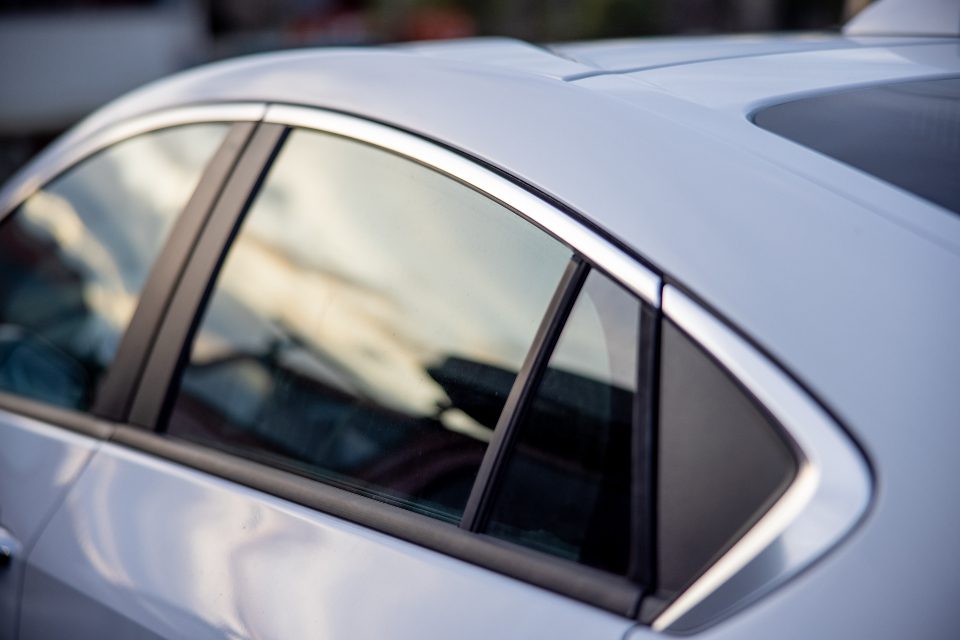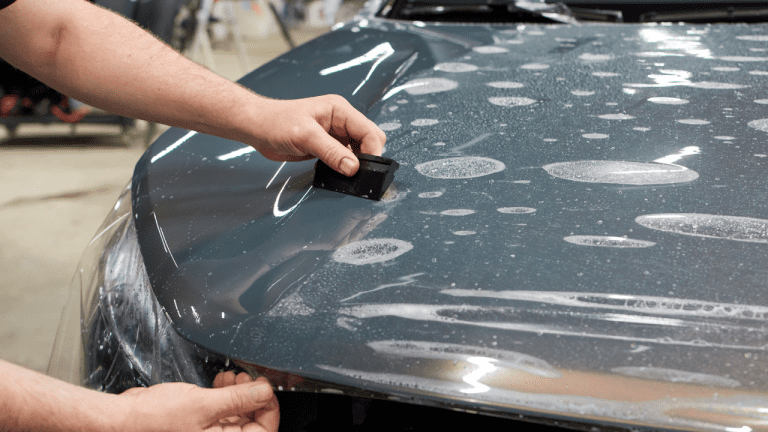Can You Use Shoe Polish On Car Windows? (Update 2024)
Maintaining clean and clear car windows is essential for safe driving and overall vehicle aesthetics. When it comes to cleaning and protecting car windows, there are numerous products available on the market. However, some car owners may wonder if they can utilize shoe polish as an alternative. Shoe polish is a common product used to enhance the appearance and protect the leather surfaces of shoes. But can it be used on car windows?
In this article, we will explore the question: Can you use shoe polish on car windows? We will delve into the composition and purpose of shoe polish, the potential issues that may arise from using it on car windows, and alternative products specifically designed for automotive glass care. Additionally, we will provide valuable tips and recommendations for properly caring for and maintaining car windows.
While shoe polish may have its merits for footwear, it is crucial to understand the implications and potential drawbacks of using it on car windows. Join us as we uncover the facts and guide you towards the best practices for achieving clean and clear car windows.
Short Ans:
No, it is not recommended to use shoe polish on car windows. Shoe polish is designed for leather surfaces and may not provide effective cleaning or protection for automotive glass. It is best to use products specifically formulated for car window care.
Understanding Shoe Polish
Shoe polish is a product specifically designed to enhance the appearance and maintain the quality of leather shoes. It comes in various forms, including wax-based polishes, liquid polishes, and cream polishes. The primary purpose of shoe polish is to nourish the leather, restore its shine, and provide a protective layer against moisture and dirt.
Shoe polish typically contains a combination of ingredients that contribute to its functionality. These ingredients may include waxes (such as carnauba wax or beeswax), solvents, dyes, and conditioning agents. The waxes in shoe polish create a thin protective film on the leather, giving it a polished and lustrous finish. Solvents help dissolve the waxes and aid in the application process, while dyes provide color to match or enhance the shoe’s shade.
It’s important to note that shoe polish is formulated specifically for leather surfaces and may not be suitable for other materials, such as car windows. Leather requires different care and conditioning compared to glass surfaces. While shoe polish can provide protection and shine to leather, it may not offer the same benefits or be compatible with car windows.
When considering the use of shoe polish on car windows, it’s crucial to understand the specific requirements and characteristics of automotive glass. This will help determine the most appropriate products and methods for cleaning, protecting, and maintaining car windows without compromising visibility or damaging the glass surface.
Potential Issues with Using Shoe Polish on Car Windows
While shoe polish may be effective for leather surfaces, it is not recommended for use on car windows due to several potential issues. Here are some concerns to consider:
1. Visibility and Clarity
Shoe polish is not designed to be transparent or provide optimal visibility through glass surfaces. Applying shoe polish to car windows can result in impaired visibility, causing distractions and potentially compromising safety while driving.
2. Streaking and Smudging
Shoe polish may leave streaks or smudges on car windows. The ingredients in shoe polish, such as waxes and dyes, may not be formulated to dry and adhere properly to glass surfaces, leading to uneven application and unsightly streaks.
3. Residue and Build-Up
Over time, shoe polish applied to car windows can accumulate and leave behind a residue or build-up. This residue can attract dust, dirt, and other particles, further obstructing visibility and making the windows harder to clean.
4. Compatibility with Automotive Glass
Car windows are typically made of tempered glass or laminated safety glass, which have different properties than leather. The chemicals and ingredients in shoe polish may react with automotive glass, potentially causing damage or discoloration.
Alternative Products for Cleaning and Protecting Car Windows
When it comes to cleaning and protecting car windows, there are several alternative products that are specifically designed for automotive glass care. These products offer effective cleaning, streak-free results, and protection without the potential drawbacks of using shoe polish. Here are some recommended alternatives:
1. Automotive Glass Cleaners
Look for glass cleaners that are specifically formulated for automotive use. These cleaners are designed to cut through dirt, grime, and road residue while leaving a streak-free finish. Choose a non-ammonia-based cleaner, as ammonia can potentially damage tinted windows or certain types of automotive glass.
2. Microfiber Cloths
Microfiber cloths are ideal for cleaning car windows. They are gentle on the glass surface and help to remove smudges and fingerprints without leaving lint behind. Use a clean, dry microfiber cloth or one lightly dampened with the glass cleaner to achieve optimal results.
3. Glass Polishes
For stubborn stains or light scratches on car windows, glass polishes can be used to restore clarity and remove imperfections. These polishes are specifically formulated to be safe and effective on automotive glass surfaces. Follow the manufacturer’s instructions for application and buffing.
4. Rain-Repellent Treatments
Rain-repellent treatments or coatings can be applied to car windows to enhance visibility during wet weather conditions. These treatments create a hydrophobic barrier on the glass, causing water to bead up and roll off the surface. This helps to improve driving visibility and reduces the need for constant windshield wiper use.
Proper Care and Maintenance of Car Windows
To ensure that your car windows remain clean, clear, and in good condition, it’s important to follow a regular care and maintenance routine. Here are some tips to help you keep your car windows in optimal condition:
1. Regular Cleaning
Clean your car windows on a regular basis to remove dirt, dust, and other debris. Use a high-quality automotive glass cleaner and a microfiber cloth to achieve streak-free results. Avoid using household glass cleaners that may contain ammonia, as it can damage tinted windows or certain types of automotive glass.
2. Inside and Outside Cleaning
Remember to clean both the inside and outside surfaces of your car windows. The interior surfaces can accumulate fingerprints, smudges, and residue from cleaning products. Use a separate microfiber cloth for the interior to prevent transferring dirt to the exterior surface.
3. Proper Technique
When cleaning car windows, use gentle, circular motions to remove dirt and grime. Avoid applying excessive pressure, as it can potentially scratch the glass. Pay extra attention to the edges and corners of the windows where dirt can accumulate.
4. Remove Stickers or Decals Carefully
If you need to remove stickers or decals from your car windows, do so carefully. Use a plastic scraper or a credit card wrapped in a soft cloth to gently lift the edge of the sticker. Apply a glass cleaner to the residue and use the scraper to remove it. Clean the area afterward to ensure a clean and clear surface.
5. Protect from Extreme Temperatures
Extreme temperatures can affect the integrity of car windows. Avoid subjecting them to sudden temperature changes, such as pouring cold water on hot windows or using a defroster on frozen windows. This can cause stress on the glass and potentially lead to cracks or damage.
6. Check and Replace Worn Wiper Blades
Worn or damaged wiper blades can leave streaks and reduce visibility. Regularly inspect your wiper blades for signs of wear, such as cracks or fraying. Replace them promptly to ensure clear and effective windshield wiping.
FAQ:
Q: Can I use shoe polish to clean and protect my car windows?
A: No, it is not recommended to use shoe polish on car windows. Shoe polish is specifically formulated for leather surfaces and may not be suitable or effective on automotive glass.
Q: Why is shoe polish not recommended for car windows?
A: Shoe polish can have several potential issues when used on car windows. It may impair visibility, leaving streaks and smudges that can affect safe driving. Additionally, shoe polish may leave behind a residue or build-up over time, which can attract dirt and hinder proper cleaning. Furthermore, the ingredients in shoe polish may not be compatible with automotive glass, potentially causing damage or discoloration.
Q: What are the alternatives to using shoe polish on car windows?
A: There are alternative products specifically designed for automotive glass care. Automotive glass cleaners, microfiber cloths, and glass polishes are effective options for cleaning car windows. Additionally, rain-repellent treatments can be applied to enhance visibility during wet weather conditions.
Q: How should I clean and maintain my car windows properly?
A: To clean and maintain car windows, use a high-quality automotive glass cleaner and a microfiber cloth. Clean both the inside and outside surfaces regularly, using gentle circular motions. Remove stickers or decals carefully, and protect car windows from extreme temperatures. Check and replace worn wiper blades to ensure clear visibility.
Q: Can shoe polish damage car windows?
A: While shoe polish is not designed for car windows, it may potentially damage the glass. The chemicals and ingredients in shoe polish may react with automotive glass, leading to damage or discoloration. Therefore, it is best to use products specifically formulated for automotive glass care.
- Protecting Your Truck Bed: A Guide To Truck Bed Covers - July 14, 2025
- Finding The Right 88-98 Chevy Truck Bed Cover - July 14, 2025
- Finding The Right 88-98 Chevy Truck Bed Cover - July 14, 2025







